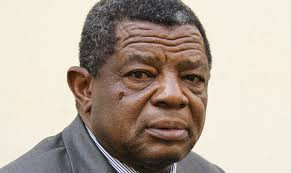
ONLY 46,3% of Zimbabwe’s working age population are employed, the Zimbabwe National Statistics Agency (ZimStat)’s latest figures have revealed.
In its 2023 fourth quarter labour force survey, ZimStat disclosed that the working age population was 8 639 522, of which 4 003 121 were in active employment.
The labour force survey aims to establish employment levels, characteristics of employed persons, employment in the informal economy, income levels, labour migration and labour underutilisation.
Bulawayo province had an employment-to-population ratio of 51,5% while Harare stood at 505%.
“Employment to population ratio for persons in urban areas was 50,7%, while for rural areas the ratio was 28,2%,” the report read.
“For females in rural areas, the employment-to-population ratio was 19,5%. For males in rural areas, the rate was 38,1%”
The survey also showed that the informal sector (non-agriculture) constituted 43,7% of the employed population.
Of the employed persons, 22,7% had incomes ranging from ZW$40 000 to ZW$800 000.
- Budget dampens workers’ hopes
- US dollar bonuses: Fresh questions over local currency
- Govt, civil servants collide over policy
- Budget dampens workers’ hopes
Keep Reading
International Labour Organisation Country Office for Zimbabwe and Namibia senior programme officer, Adolphus Chinomwe said the statistics show the lack of capacity of the economy to create more and better formal jobs.
“The economy misses the productive capacity that should be contributing to economic activity and growth, instead these youths end up engaging in negative coping mechanisms like drugs and alcohol abuse that puts pressure on health and other social services."
Economist Prosper Chitambara said having high levels of informal employment indicates structural distortions and rigidities in the economy.
“Informal employment is associated with higher incidences of poverty, lower levels of income and lower levels of productivity,” Chitambara said.
“We need to establish the right kind of incentive to incentivise businesses to formalise, addressing the ease of doing business environment in terms of structural bottlenecks that militate against investment.”
Another Economist Vince Musewe said the formal sector had shrunk.
“The fact of the matter is that more Zimbabweans are not waiting to be employed. They are creating their opportunity because they understand that the formal has shrunk,” Musewe said.
“We need to say what policies shall we adopt to make it easy for people to be self-employed and incentivised to pay tax.
“We don't need to say let's formalise the economy because the economy is a dynamic animal where people react according to what is happening.”
Zimbabwe Confederation of Public Sector Trade Unions chairperson, David Dzatsunga, said the latest figures were worrying.
“We have a big problem as a nation. The informal sector pays little to no tax yet they are making a lot of money,” Dzatsunga said.
“Government revenue should come from tax to enable it to look after its workers; however these statistics show that the burden only lies to the 36,7% employed."










